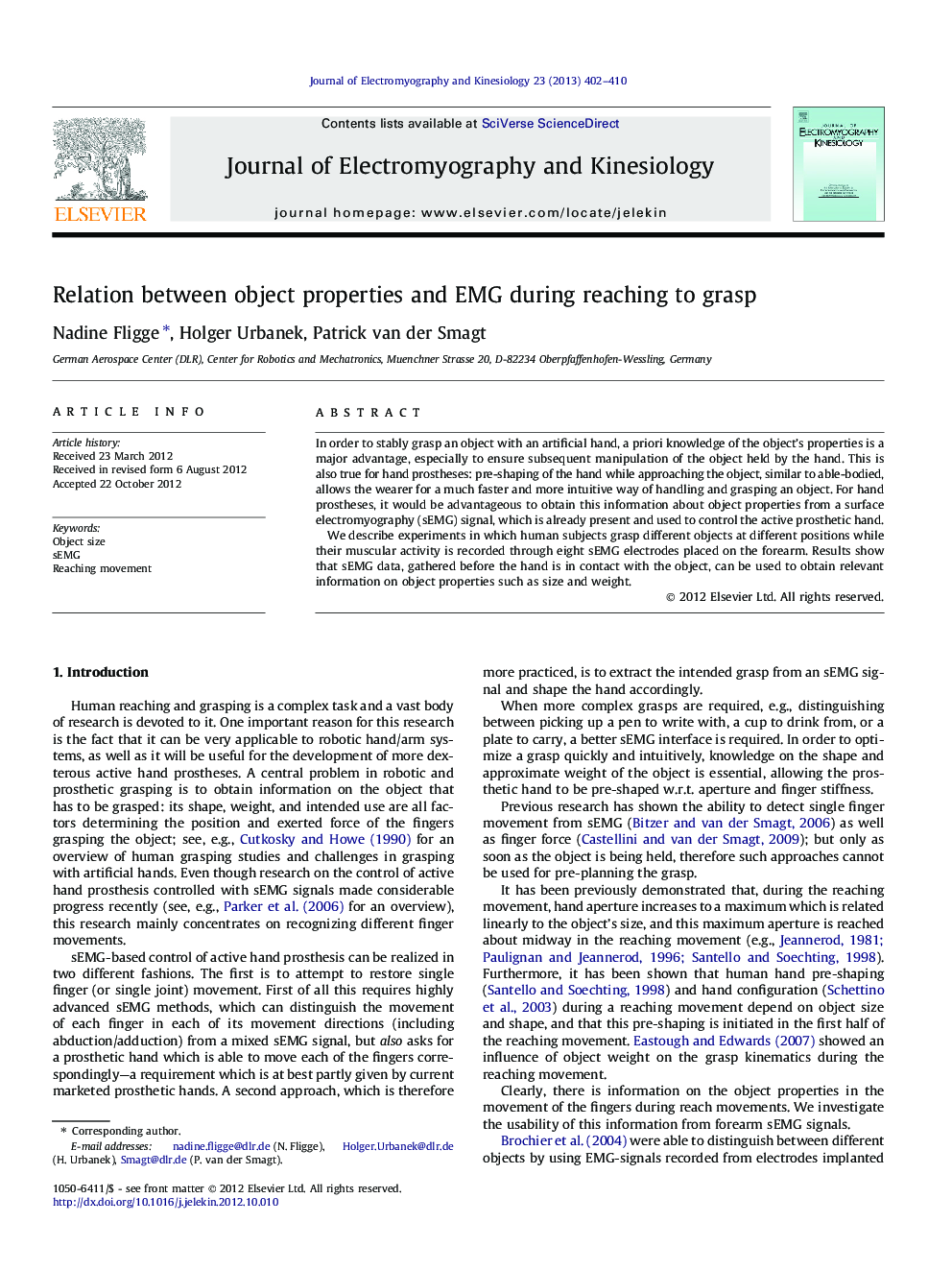| Article ID | Journal | Published Year | Pages | File Type |
|---|---|---|---|---|
| 4064966 | Journal of Electromyography and Kinesiology | 2013 | 9 Pages |
In order to stably grasp an object with an artificial hand, a priori knowledge of the object’s properties is a major advantage, especially to ensure subsequent manipulation of the object held by the hand. This is also true for hand prostheses: pre-shaping of the hand while approaching the object, similar to able-bodied, allows the wearer for a much faster and more intuitive way of handling and grasping an object. For hand prostheses, it would be advantageous to obtain this information about object properties from a surface electromyography (sEMG) signal, which is already present and used to control the active prosthetic hand.We describe experiments in which human subjects grasp different objects at different positions while their muscular activity is recorded through eight sEMG electrodes placed on the forearm. Results show that sEMG data, gathered before the hand is in contact with the object, can be used to obtain relevant information on object properties such as size and weight.
